Halloween is coming, and while people are out trick-or-treating or enjoying a costume party, the Universe will continue to go about its business.
The business of DEATH, that is. Black holes will continue to tear apart stars and gorge themselves on the tasty, gooey insides. Galaxies will erupt with high-energy radiation, blasting out killer rays for hundreds of thousands of light years. Giant clouds of gas will collapse, form stars, and promptly have their interiors eaten out from within.
The Universe is scary, and even scarier on Halloween. And I can prove it to you, with a gallery of eerie and spooky images I hand-picked just for you. So turn down the lights, play some creepy space sounds, and enjoy. And if you get a chill down your spine while you peruse the gallery, why, I don’t blame you. After all, Halloween is for make-believe … but what you’re seeing is very, very real.

Courtesy of NASA/IoA/A. Fabian et al. Original post.
Is this a moaning skull, aflame with Halloween madness?
Actually, it’s something far scarier: a gigantic black hole gobbling down matter and spewing out vast amounts of high-energy radiation.
In the heart of the Perseus cluster of galaxies lies the monster Perseus A, a huge galaxy that is blasting out X-rays. In this image by the orbiting Chandra X-ray Observatory, the galaxy is between the two “eyes”, which are most likely gigantic bubbles of gas expanding away from the supermassive black hole at the heart of the galaxy. Those dark regions are each half the size of our own Milky Way galaxy, 100,000 light years across!
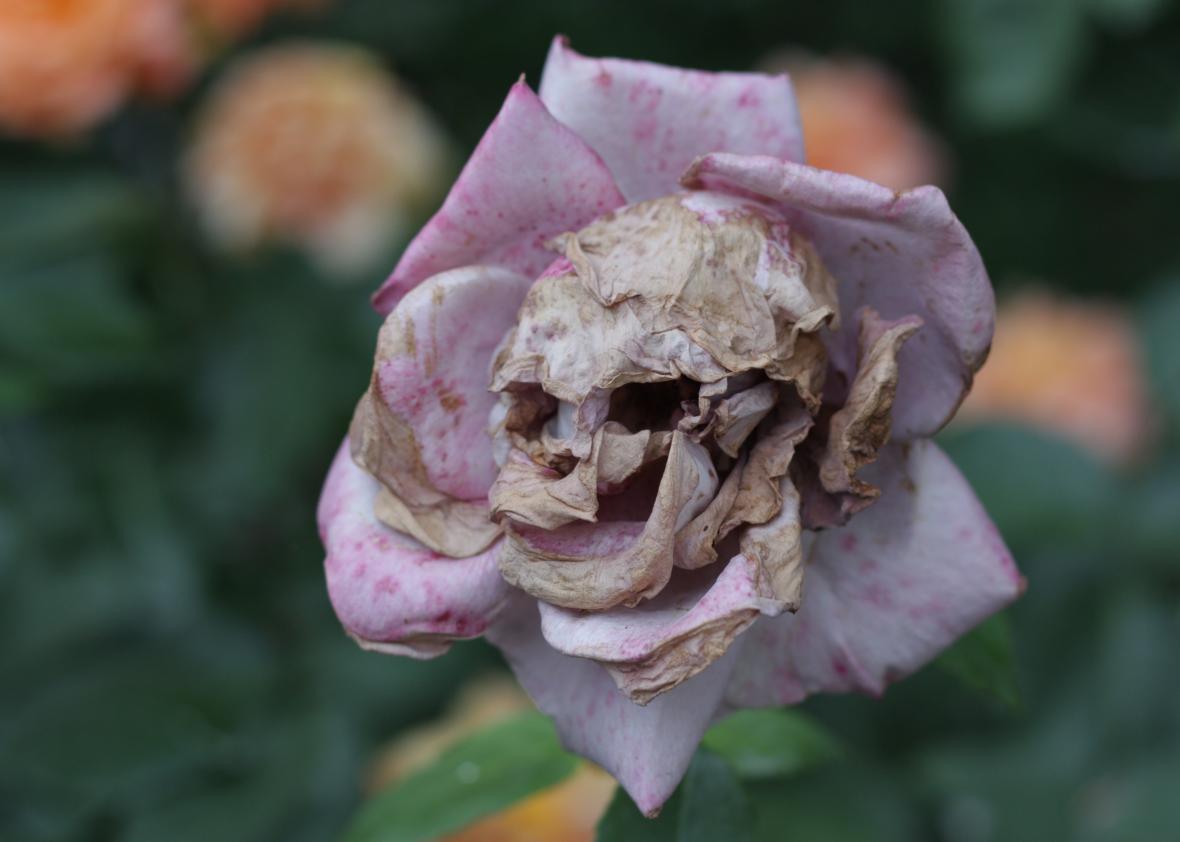
Photo by Todd Terwilliger/Flickr, used by permission. Original post.
A rose, by any other name, would smell … like rotting corpses. Ewwww. (And yes, it’s a real picture!)
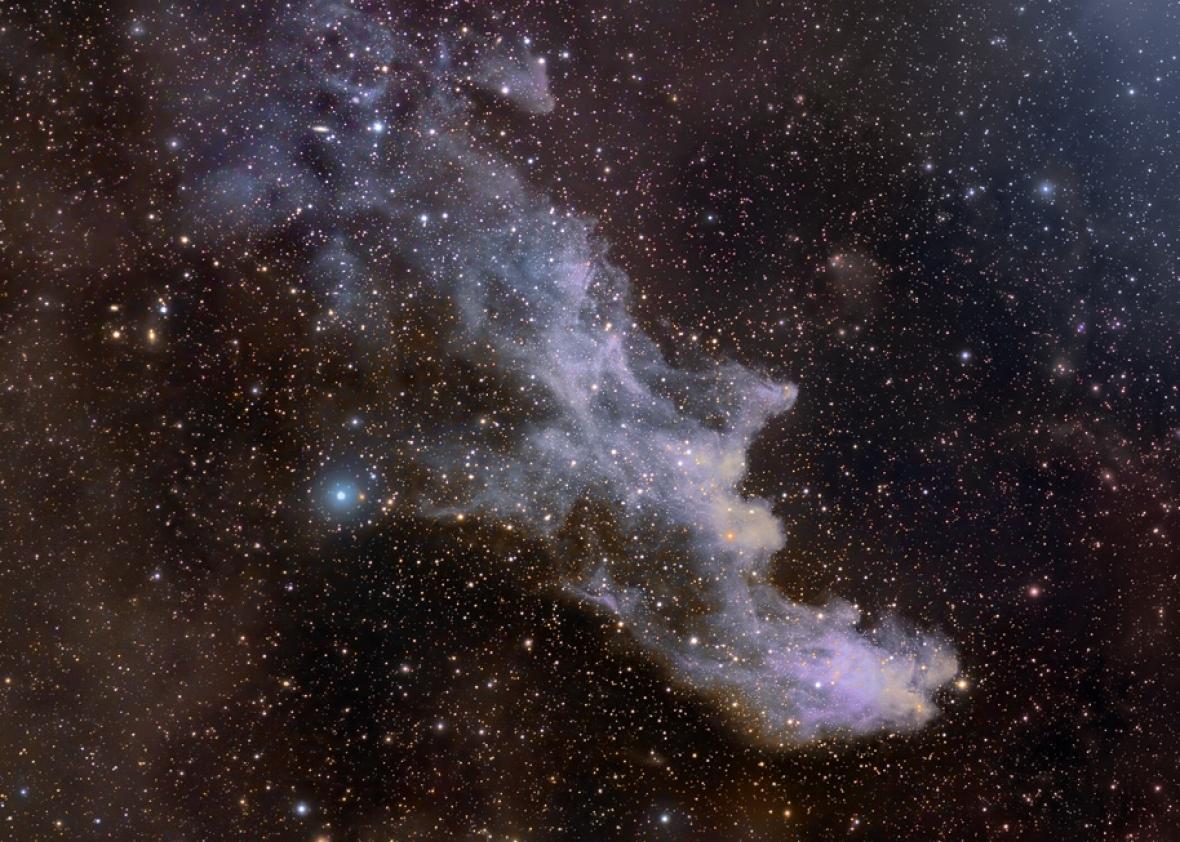
Courtesy of Rogelio Andreo. Original post.
The knee of Orion is marked by the bright star Rigel, and just off to the side is the large glowing Witch Head nebula, which really does look like a classic depiction of a hag’s face: open-mouth, scraggly nose, deep eyes, gaping as she looks off to the right.
This image was taken by astrophotographer Rogelio Andreo, and was a small piece of a vast Orion mosaic he made. It was so incredibly beautiful that I picked it as my No. 1 astronomy picture of 2010.

Courtesy of Rogelio Andreo. Original post.
What scares a ghost? Something must have frightened this poor guy, since he’s running for his … uh. .. life? Death? Whatever.
This is one of my favorite nebulae in the sky, and if it looks familiar, it should: In a bizarre—and literal—twist of fate, it’s actually the picture of the Witch Head Nebula turned sideways!
I love that you can take an astronomical picture related to Halloween, turn it 90 degrees, and get a different Halloween picture! Turn your head to the left to see the Witch.
If you have a hard time seeing it, the ghost is running to the right; the upswept arc on the right is his arm (the Witch’s chin), his head is the bump to the left (the Witch’s lip), his other arm is the arc on the left (the Witch’s nose), and his ghostly feet dangle below.

Courtesy of Adam Block/Mount Lemmon Sky Center/University of Arizona
Adam Block is a fantastic astrophotographer, using the 0.8 meter Schumann telescope in Arizona to take incredible images. This one shows gas and dust around the very young star V633 Cas, still in the throes of birth. When human babies are born, they scream, and from the looks of this star it is, too. But oits age is estimated as more than 30,000 years, which is a long, long time to wail …
This is a small part of a much larger and fantastically beautiful image of the region around the nebula vdB1, and I really recommend you take a look. It’s breath-taking.

Courtesy of NASA/CXC/PSU/L. Townsley et al (X-ray) and NASA/JPL/PSU/L. Townsley et al (infrared)
160,000 light years from home, the Tarantula nebula (how’s that for a Halloweeny name?) is a factory cranking out thousands of stars. Some of these stars are so luminous they have heated the gas to millions of degrees, and this expanding hot gas (in blue) has pushed open bubbles in the cooler gas around them (red).
And if that were happening inside of you, I imagine you’d be screaming in fury as well.
Man, that is one ticked off nebula. I’m glad it’s so far away.
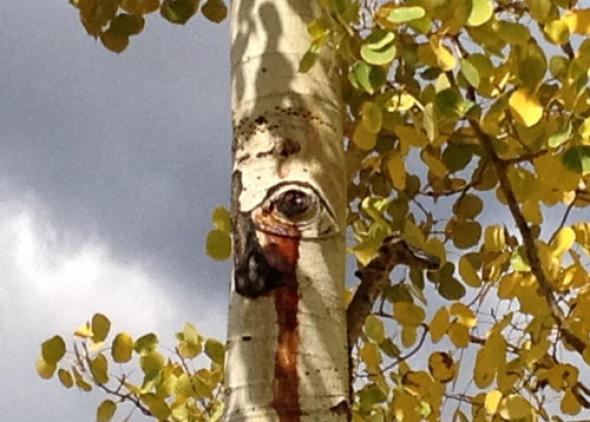
Photo by Phil Plait
In 2012, my wife and I hosted a group of science enthusiasts to a vacation at the C Lazy U dude ranch as part of Science Getaways—vacations with extra bonus science added. While out on our biology hike, we saw vast groves of aspen trees, and learned that they reproduce themselves by sending up runners from their rooots—clones, essentially.
One, though, must’ve suffered an error during the DNA transcription. Unless there’s some evolutionary benefit for an aspen tree to have a bleeding eye in its trunk.
And if that’s the case, I don’t think I wanna know.

Courtesy of Icelandic Coastal Patrol. Original post.
This seriously disturbing image is not actually a photo, and it’s not actually an astronomical object! It’s an image of the Eyjafjallajökull volcano in Iceland when it was erupting in 2010, made using radar observations.
But c’mon, look at it! How could I not include it?

Courtesy of Adam Block/NOAO/AURA/NSF
Even in space, you can’t escape Halloween! I’m not sure what it is on the right that’s chasing those two poor, terrified people running away with their arms up in the air, but it must be really scary.
This is SH2-136, a Bok globule, a dark blob of gas that forms stars deep within. Parts of it are lit up by nearby stars, allowing us to witness this act of cosmic trick-or-treatery.
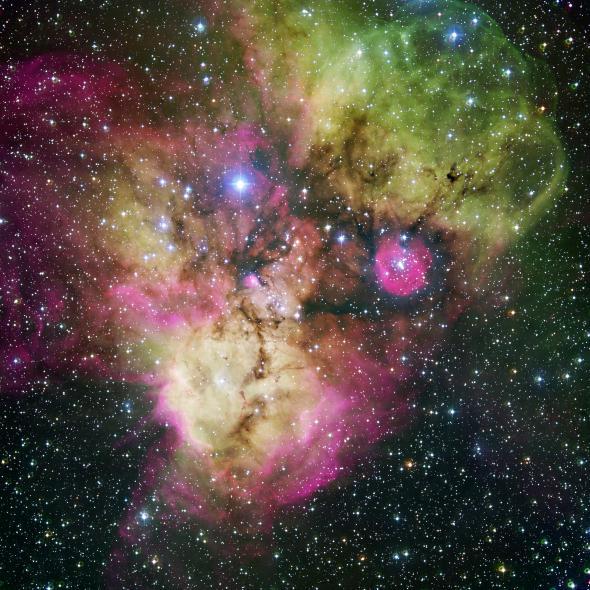
Courtesy of ESO
A vast cloud of gas surrounding two huge clusters of stars stares at you, glaring, knowing you should be working and not reading Halloween blogs.
Or is that your conscience speaking? This is actually a star-forming cloud called NGC 2467, as seen by the MPG/ESO telescope in Chile. Each eye is actually a cluster of stars, blowing huge holes in the gas cloud, forming what looks like two colorful eyes burning a hole into your very soul.
I have to note: this object is in the constellation of Puppis, the stern of a cosmic ship. So this really is a stern glare!
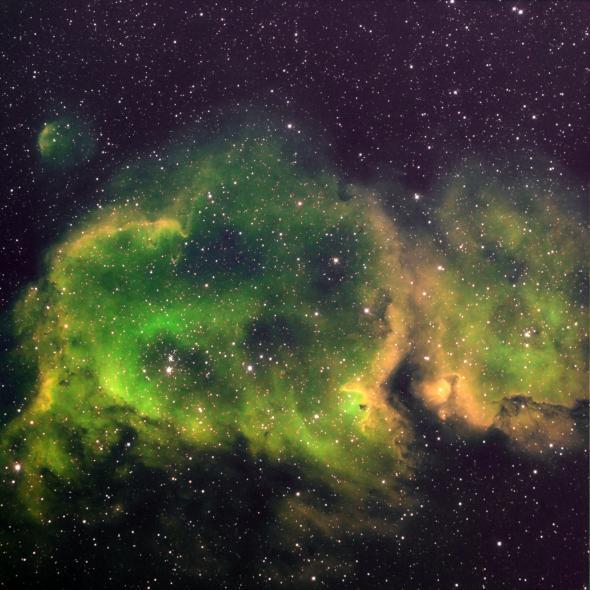
Courtesy of César Cantú. Original post.
Glowing ominously green and yellow in this picture, the nebula W5—nicknamed (seriously) the Soul Nebula—peers into your soul with its black eye sockets filled with pinprick stars …
But really it’s a vast cloud of gas furiously churning out stars. The winds of subatomic particles and fierce light from those newborn stars carve out cavities in the gas, leaving what look like eye sockets and a nasal bone in a huge green skull.
I have to say … it looks a lot like the very creepy aliens called “The Silence” from Doctor Who.
This image was taken by astronomer César Cantú, who has dozens of other stunning astronomical photos on his site … but none quite so creepy.
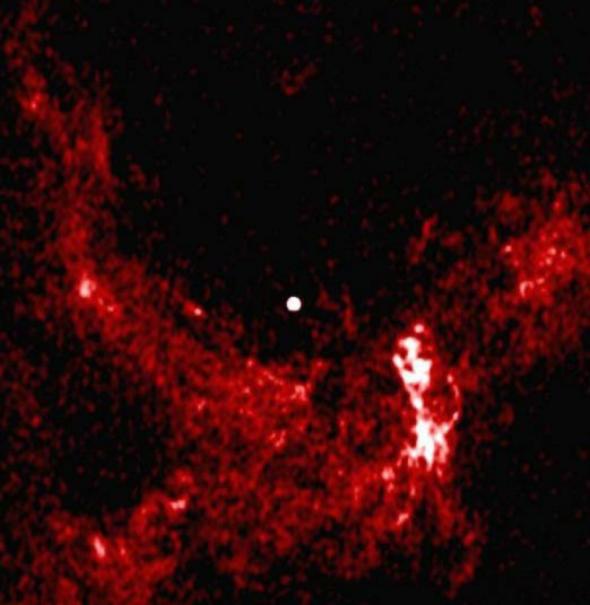
Courtesy of Zhao and Goss using the VLA radio telescope
At the center of our Milky Way galaxy lurks a massive black hole, which, for the moment, is quiet. The surrounding material barely glows in radio waves, but there, off to the right … is that the baleful face of a woman, just a half a light year from the monster? Why is she sad? What is she mourning?
Perhaps she perceives her own fate: being twisted around, the gas making up her visage warped and wrapped as it circles that black hole over thousands of years, eventually, it may be, to take the final plunge into eterity.
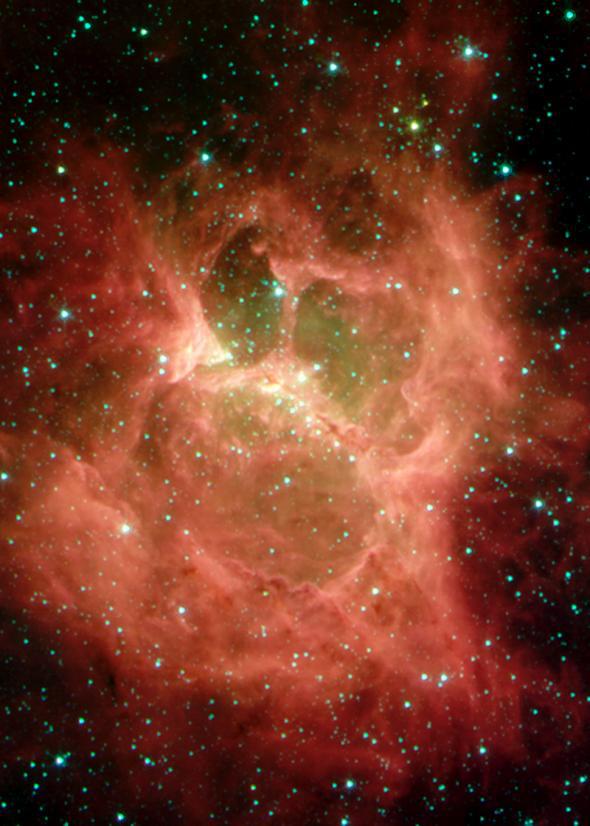
Courtesy of NASA/JPL-Caltech/S. Carey (Caltech)
OK, I made that name up. It’s actually called DR 6, which isn’t nearly as much fun, especially at this time of year.
This is an infrared Spitzer Space Telescope image of the gas cloud, which is forming a dozen or so stars inside it. The eyes and mouth are bubbles in the gas blown by the winds of the newborn stars.
So in a way, it really is yelling. But at a distance of 4,000 light years—and across the vacuum of space—there’s nothing we can hear.
Except: BOO!